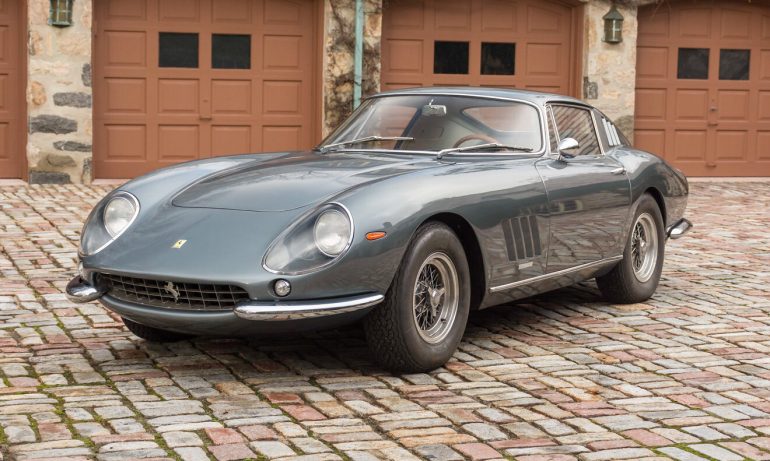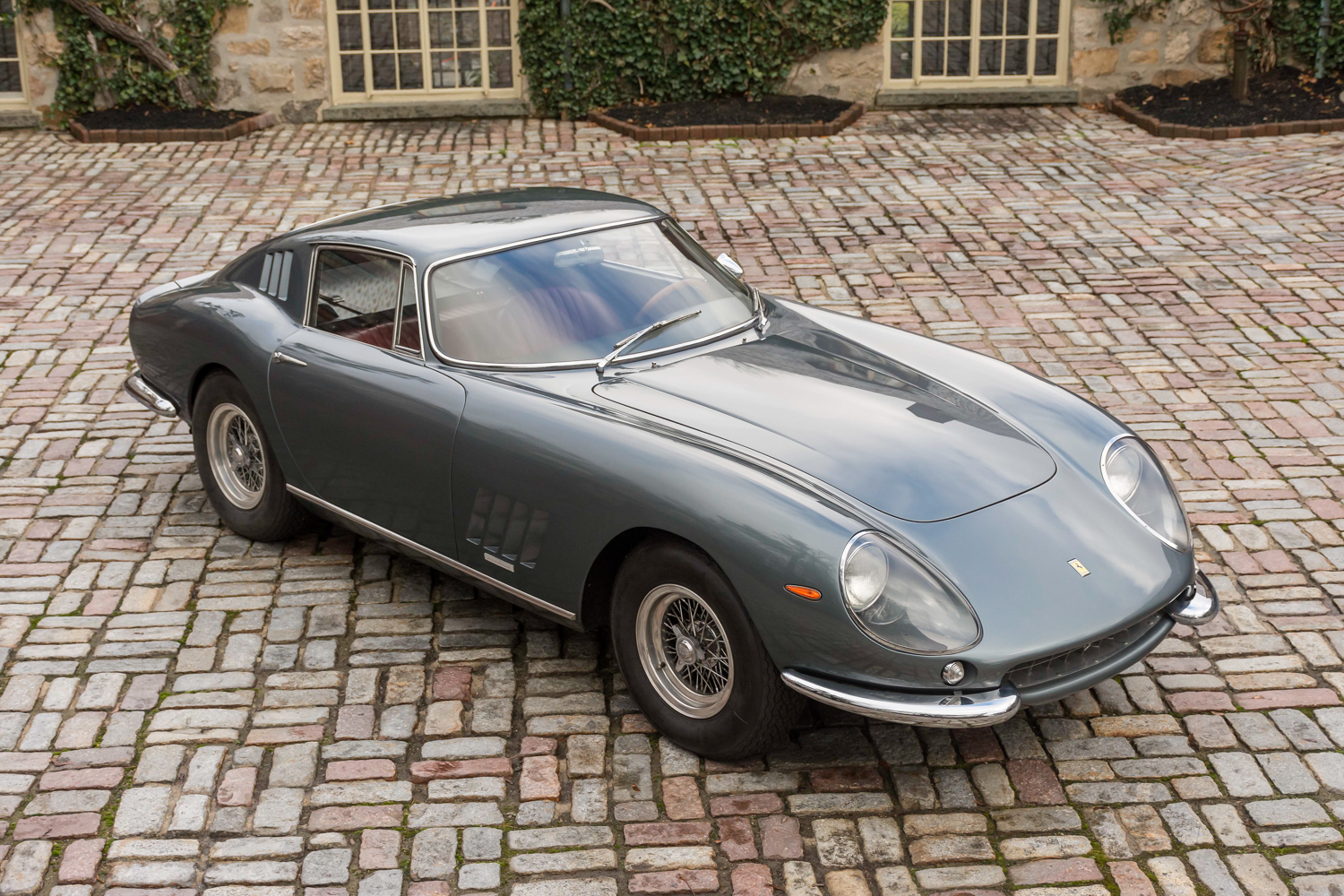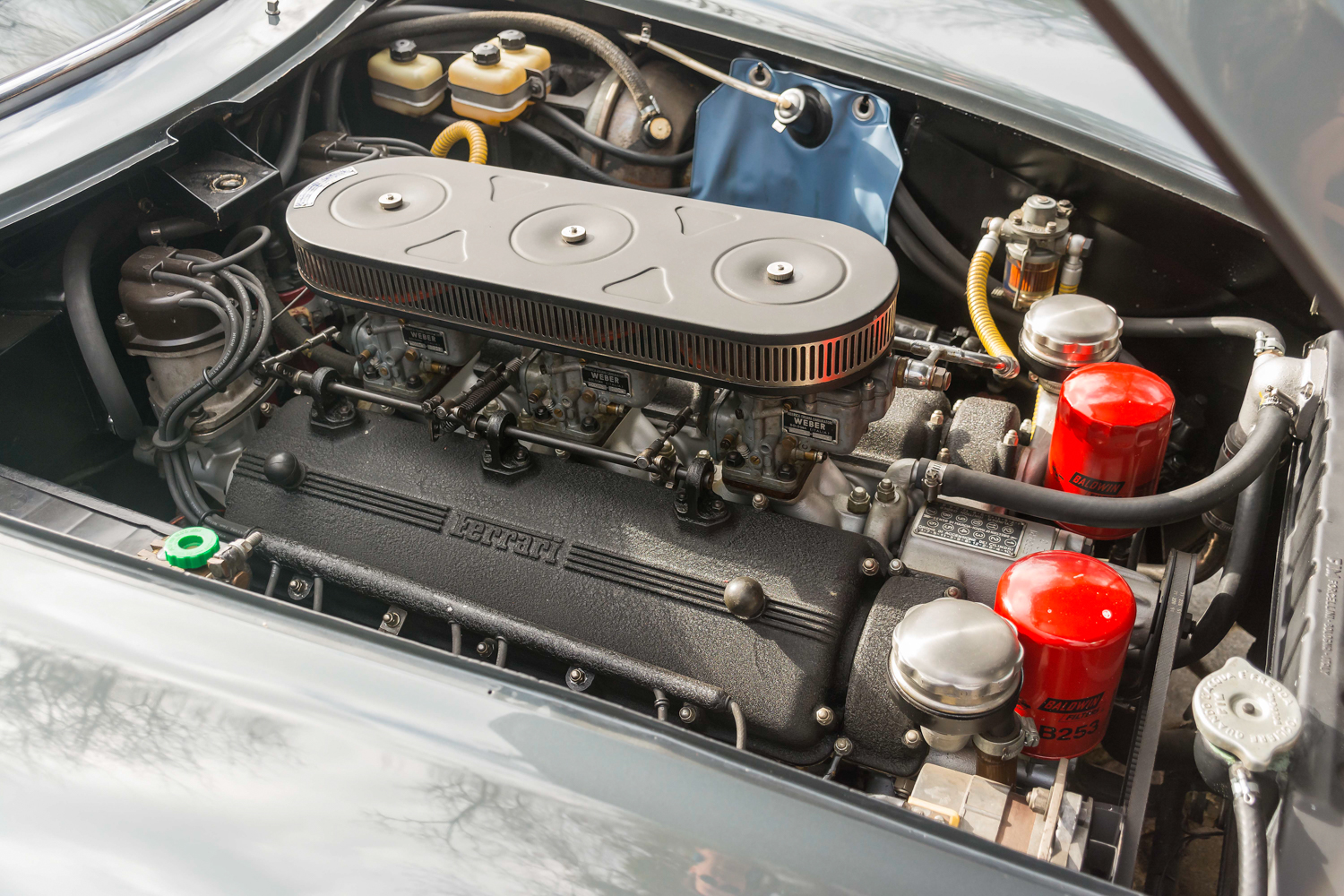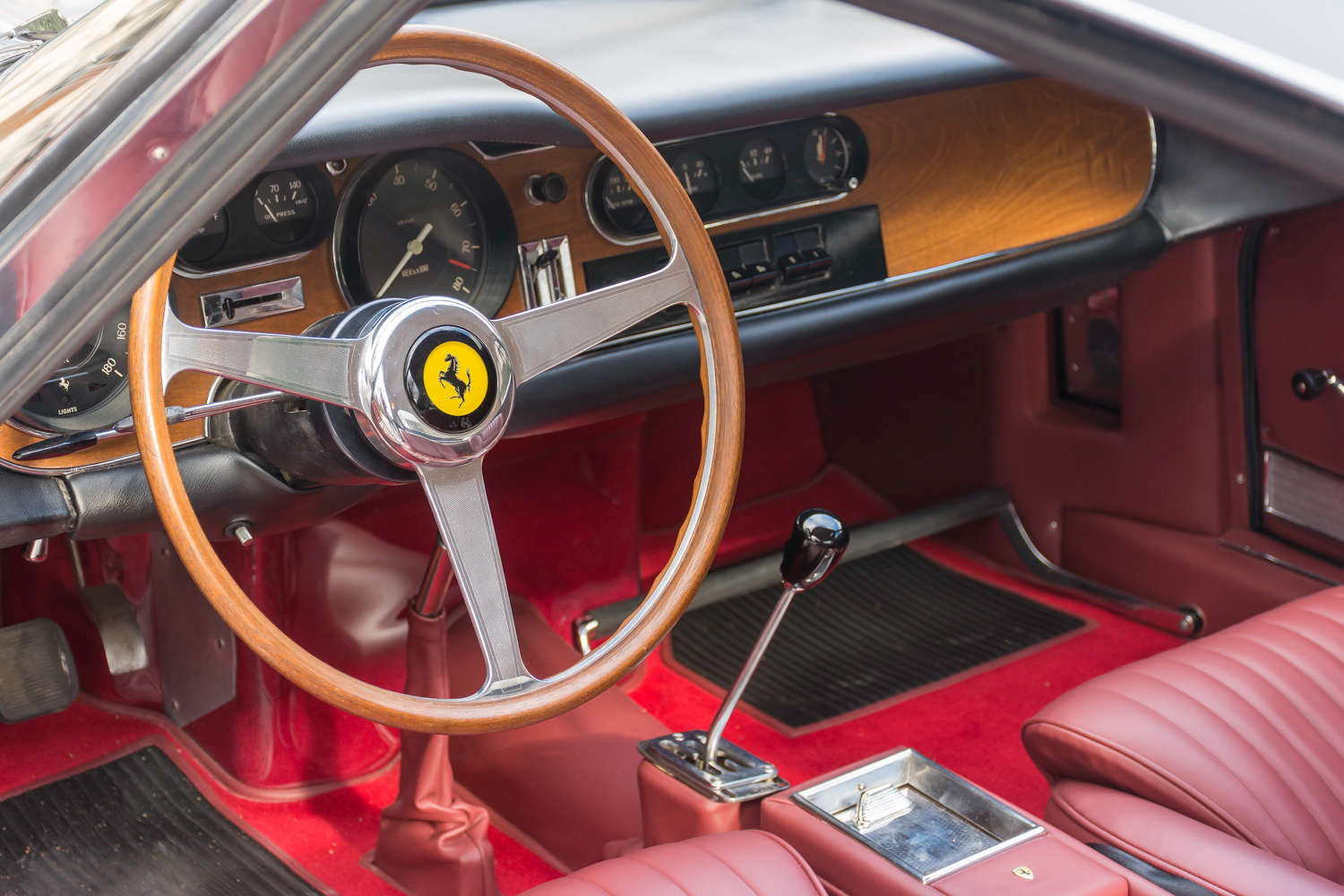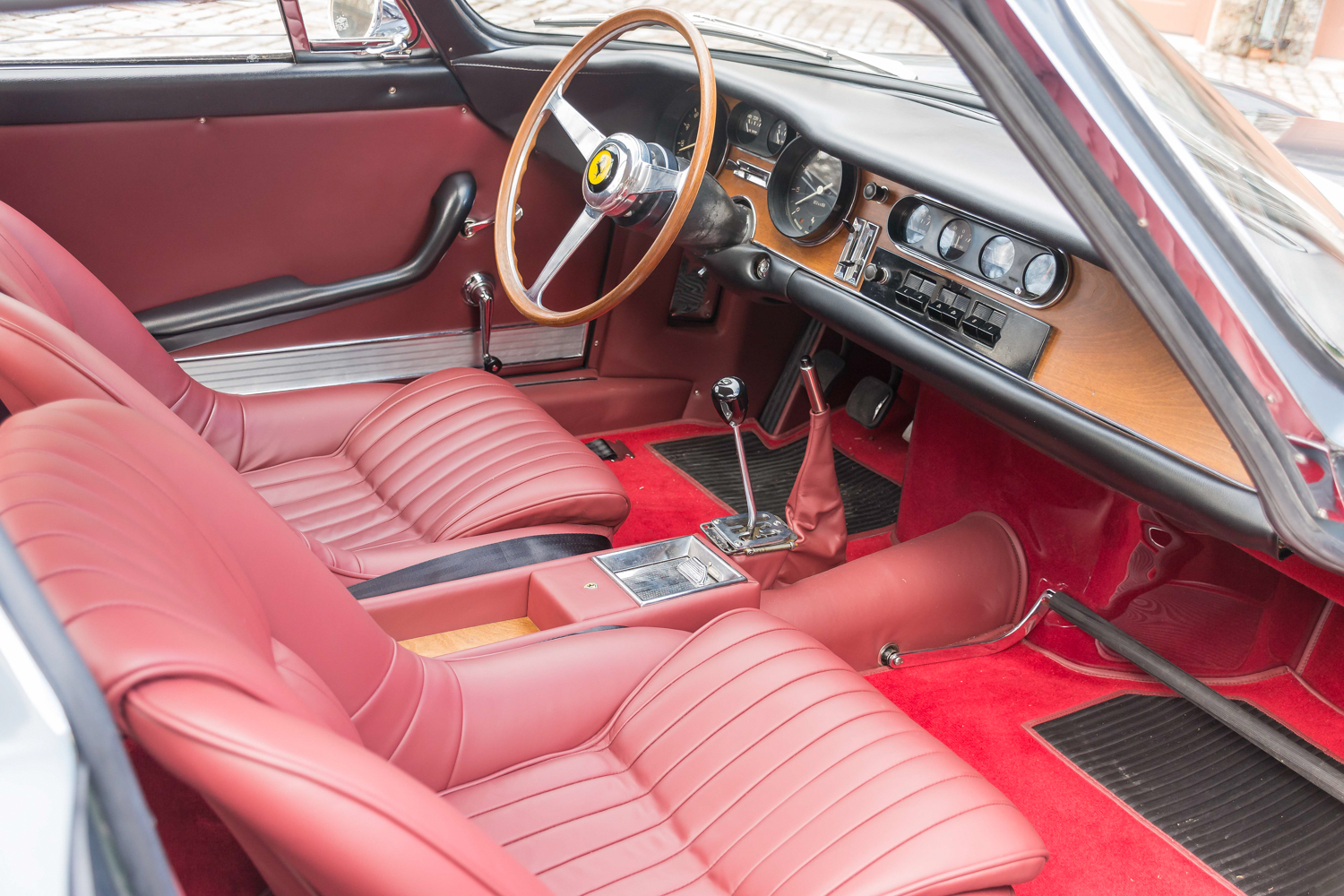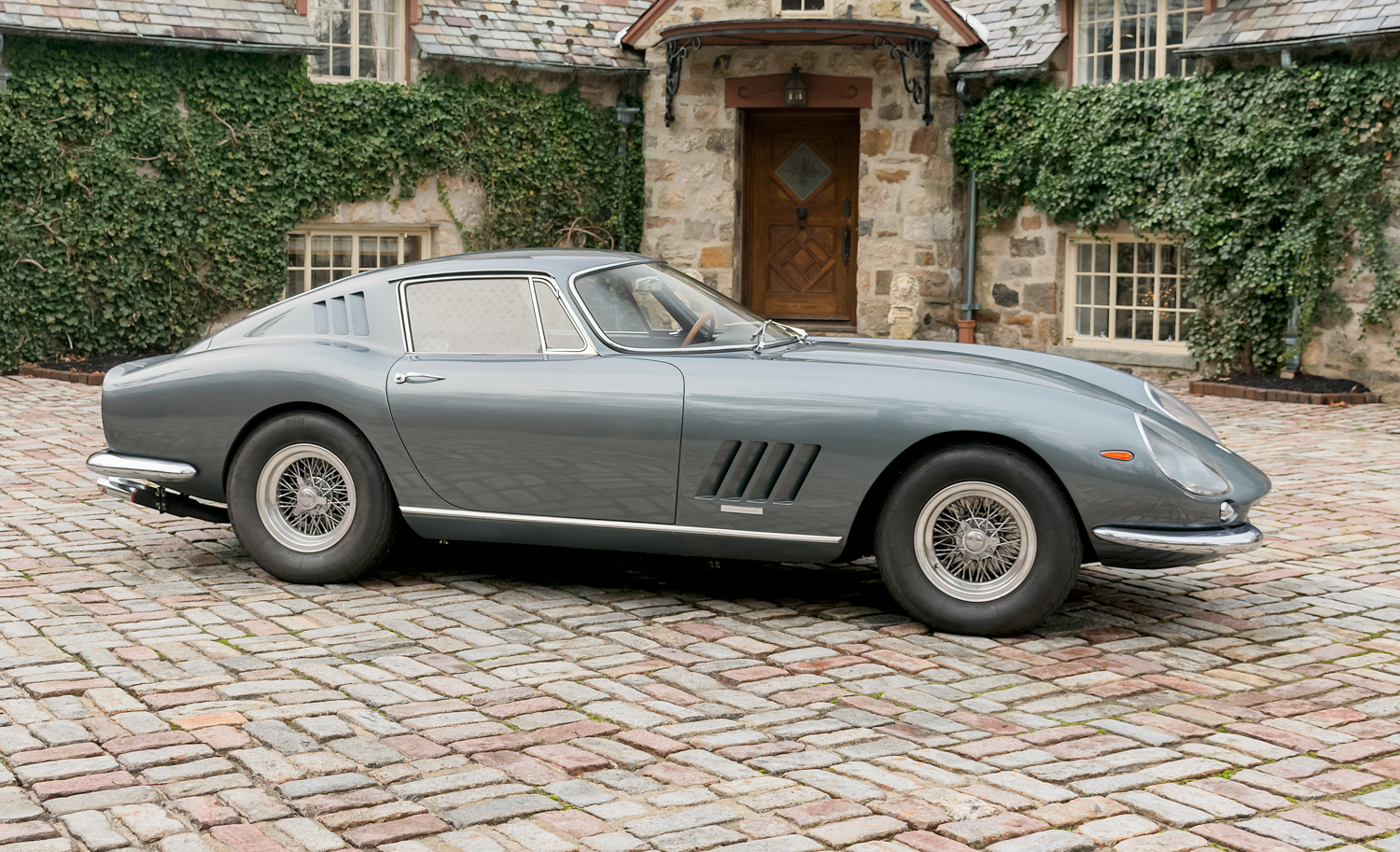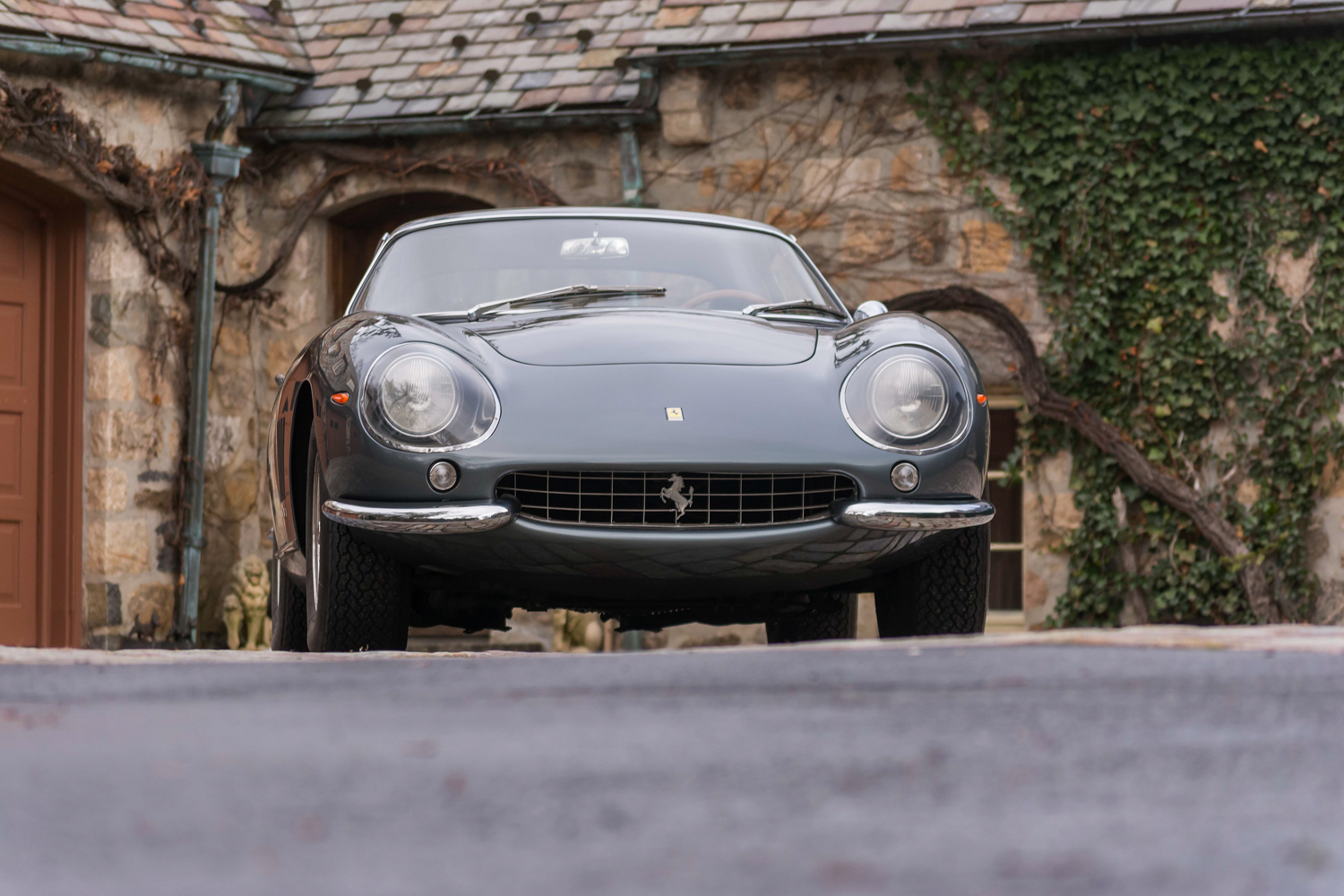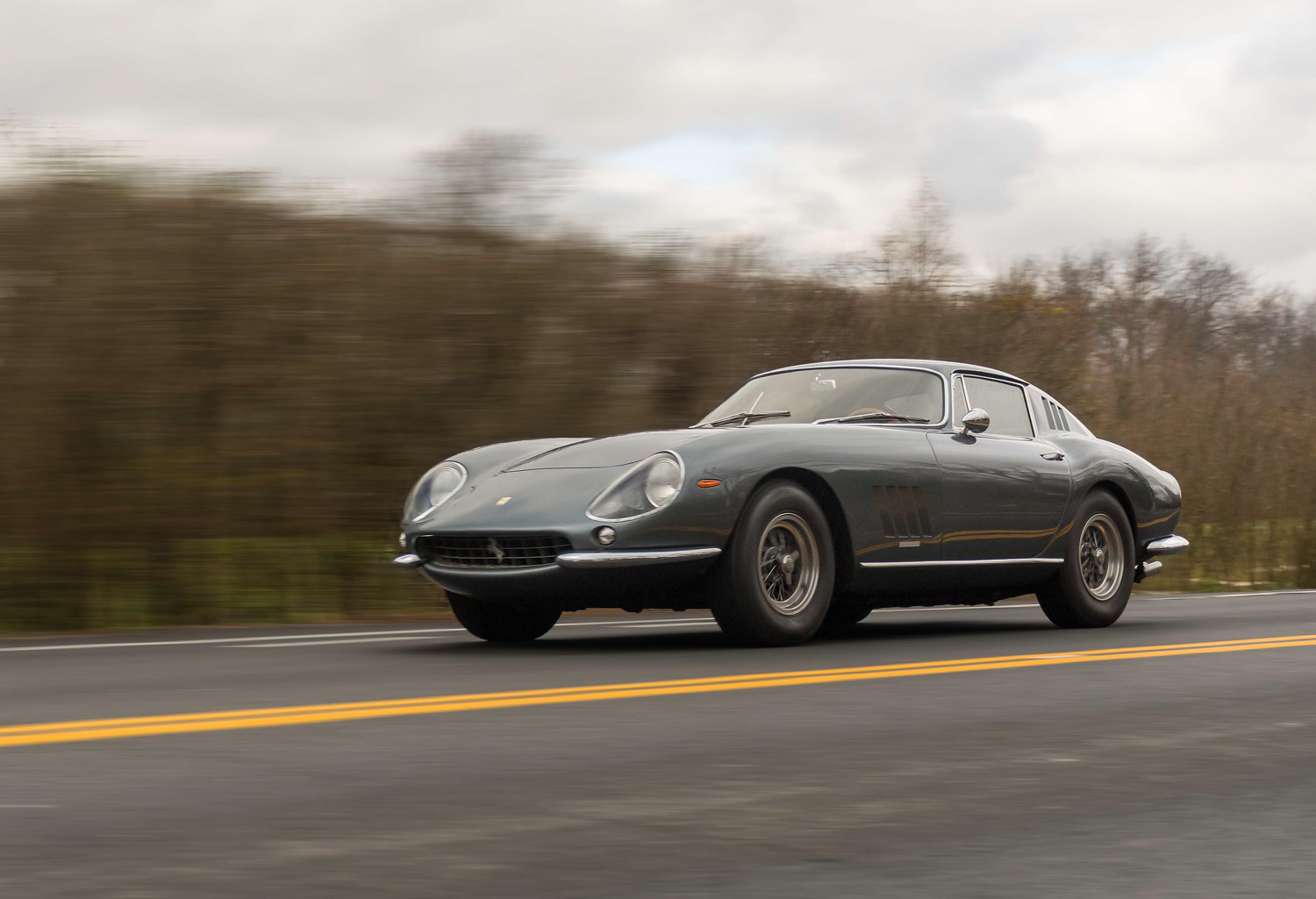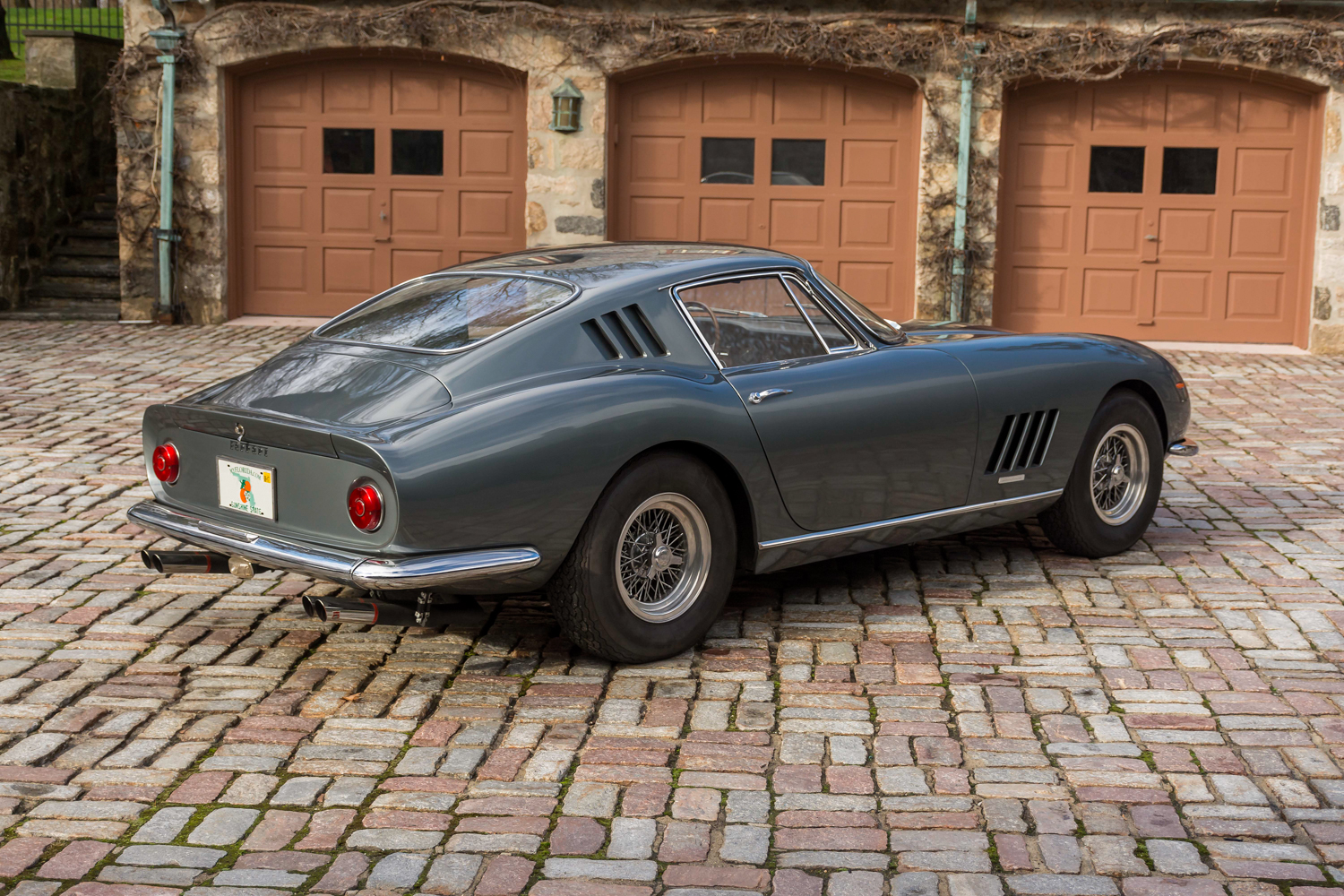In October of 1964, the 275 GTB was revealed at the Grand Palais in Paris, showing styling cues influenced by the mighty 250 GTO. The 275 was more than a larger engined version of the original 250 GT series, and though it may have been an evolutionary step, it was a significant one.
While the 275 GTB possessed a slightly larger motor—the Type 213 was the final development of the Columbo short-block design—one of the most significant departures from its predecessors was the introduction of an independently sprung, five-speed rear transaxle, that replaced the earlier cars’ four-speed gearbox and live rear axle. This gave the 275 a more neutral weight balance.
In June of 1965, chassis 7711 was sent to Carrozzeria Scaglietti in Modena. It was then finished back at the Ferrari factory in September of 1965 and delivered to Luigi Chinetti Motors in New York City. Interestingly, 7711 was built in 1965 while the Short Nose model was still in production. In fact, the chassis built just before 7711 is chassis number 7707 and is listed as the Long Nose prototype. Subsequently, 25 more Pininfarina designed 275 Short Nose cars were produced by Carrozzeria Scaglietti after these two were built, but before the official production change over shifted to Long Nose cars. Ferrari lore has it that the redesign of the front end came about when it was discovered that the Short Nose 275’s frontend would lift at high speed, not a desirable action.
This particular car has other unique differences from the standard Long Nose. One difference is the gas tank. It’s a riveted competition style tank, centrally located in the boot, and was standard on the earlier cars. It also still has the internal trunk hinges and smaller rear glass.
Inside is no different. The interior is also more the style of the Short Nose, with two oddities on the dash, no glove box, and no cigar lighter. Even the hood is of the Short Nose style on 7711. Another small detail difference, there is a Cavallino Rampante on the grill. Not something found on other Long Nose cars.
Underneath this Ferrari, there are even more differences. Where the Short Nose cars were using rubber Giubos and an open prop shaft, 7711 has constant velocity (CV) joints, whereas the later production Long Nose cars eventually used a torque tube. The CV joints were an interim measure.
Getting behind the wheel of a classic Ferrari is not a casual act. You turn the key and hear the whir of the starter and then the symphony of twelve starts. But you can’t leave yet! Everything has to come up to temperature. So you sit and listen, and after a while the sound of the idle changes. You check the Veglia gauges to see if they agree, before it’s time to go.
You get plenty of feedback from the road you are firmly attached to because this is the first road going Ferrari with front and rear independent suspension. There is no disconnect, you are part of Enzo’s creation and it’s environment. The 275 is not a rolling computer it’s a CAR, an analog beast.
You get a major upper-body workout at low speeds, but once you are out on the open road and up to speed the steering is firm and precise. There are no paddles to make microsecond shifts. You have at your right hand a tall, beefy shift lever that you move with authority in the gated box that sends your commands to the 5 speed transaxle in the rear.
These actions are not quick and double clutching isn’t a bad idea. As the RPMs increase and you move through the gears, the siren song inspires you on, to keep pushing hard on the accelerator. The sound becomes very provocative at 7500 revolutions per minute. The 275 is a perfect blend of Grand Tourer and motorsports masterpiece.
You have to give all your respect to the 275 and treat it accordingly. This is a thoroughbred from another age, so mind yourself as there are no computer minders to watch your backside.
Treat it right and the 275 GTB will rain style, beauty and excitement down on you in a never ending storm of Italian passion.
Specifications
| Length | 4360 mm / 171.7 in |
| Width | 1685 mm / 66.3 in |
| Height | 1350 mm / 53.1 in |
| Wheelbase | 2400 mm / 94.5 in |
| Front track | 1377 mm / 54.2 in |
| Rear track | 1393 mm / 54.8 in |
| Engine | Type 213 SOHC V-12 |
| Valves per cylinder | 2 |
| Displacement | 3286 cm3 / 199.9 cui |
| Bore | 77 mm / 3.03 in |
| Stroke | 58.8 mm / 2.31 in |
| Compression ratio | 9.2 : 1 |
| Carburetion | Weber 40 DFI or Weber 40 DC2/6 |
| Horsepower net | 206 kW / 280 PS / 276 hp (DIN) @ 7500 |
| Torque net | 294 Nm / 217 ft-lb @ 5000 |
Valuation
| Concours | $2,300,000 |
| Excellent | $1,950,000 |
| Good | $1,750,000 |
| Fair | $1,550,000 |


